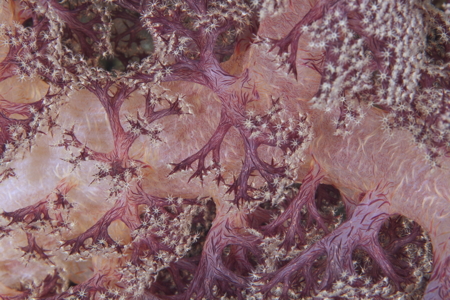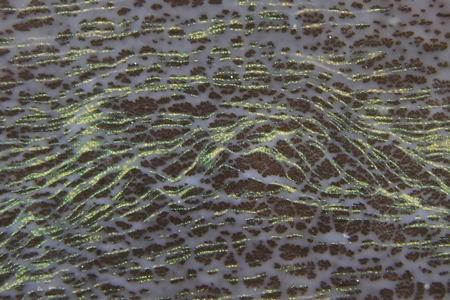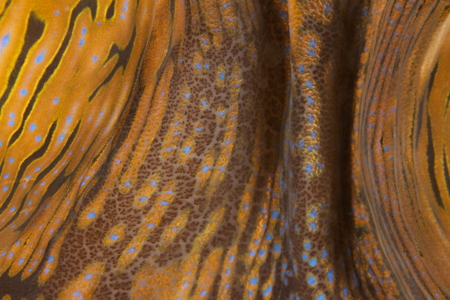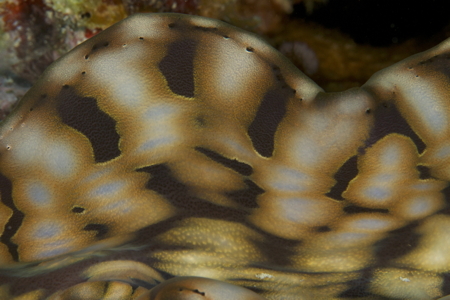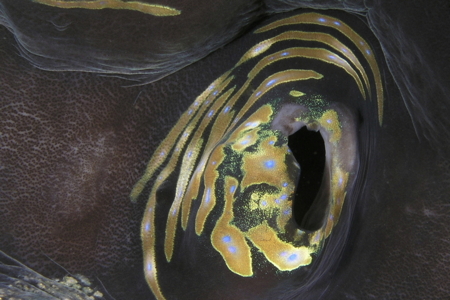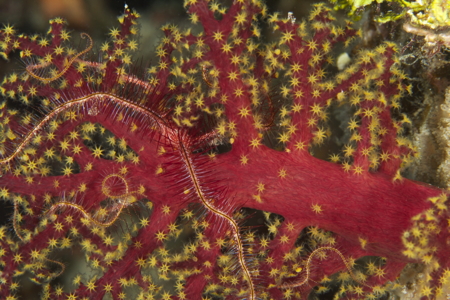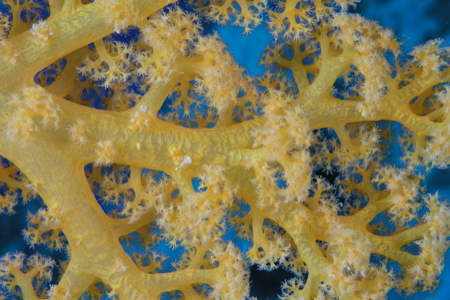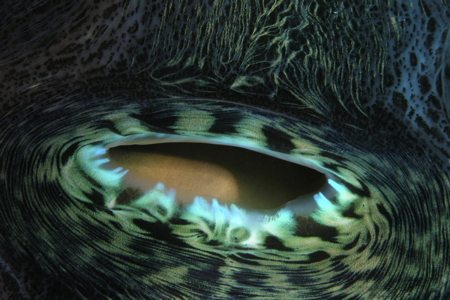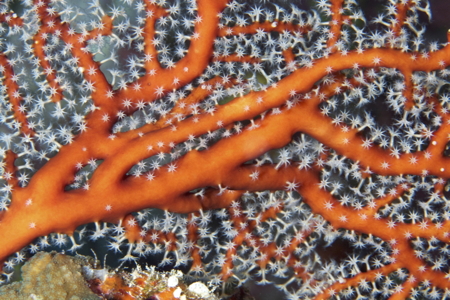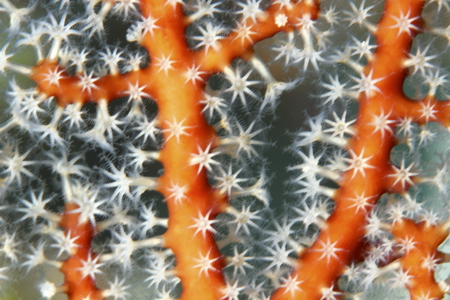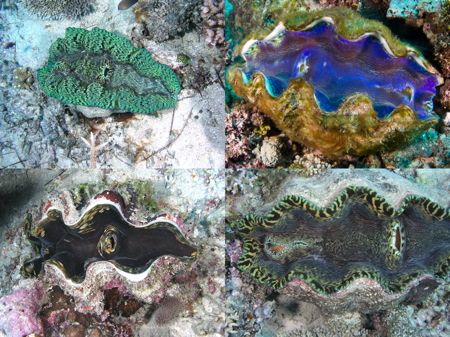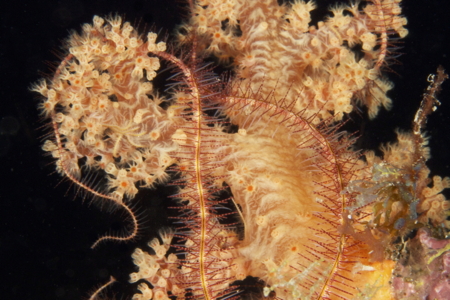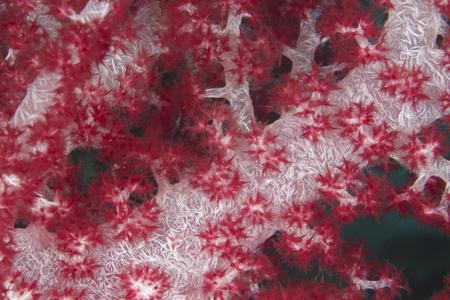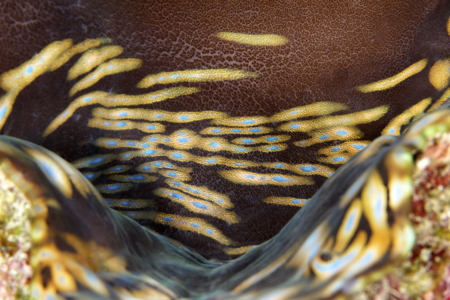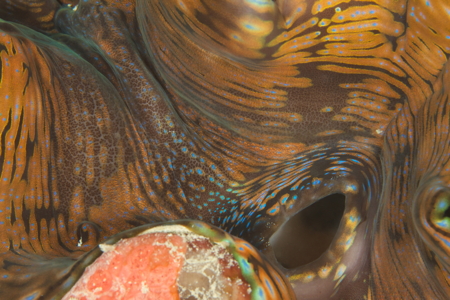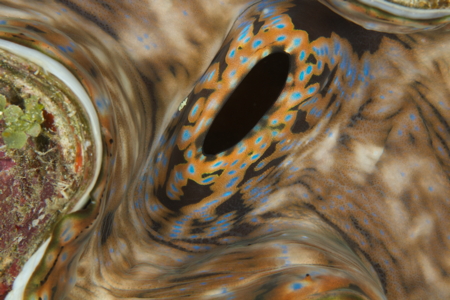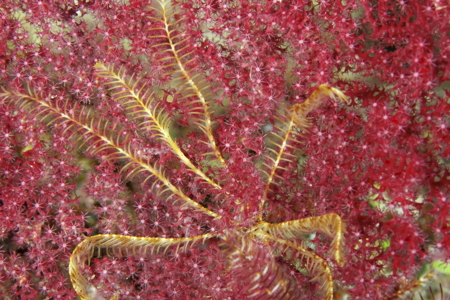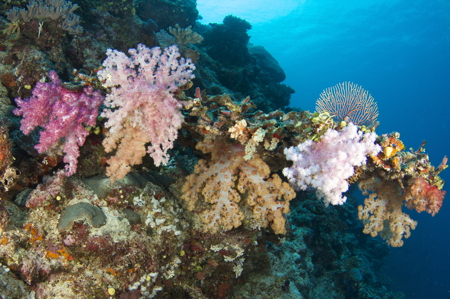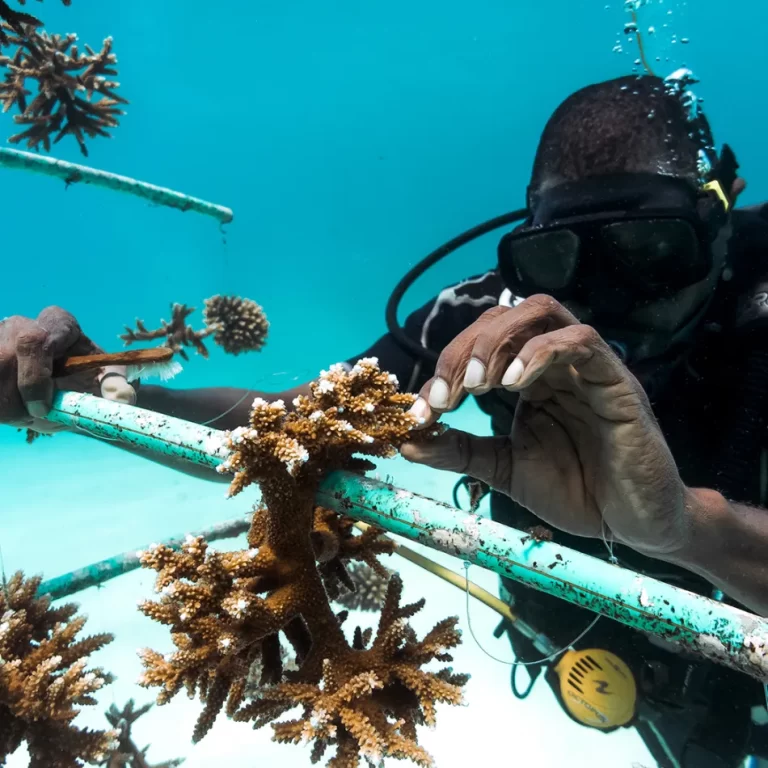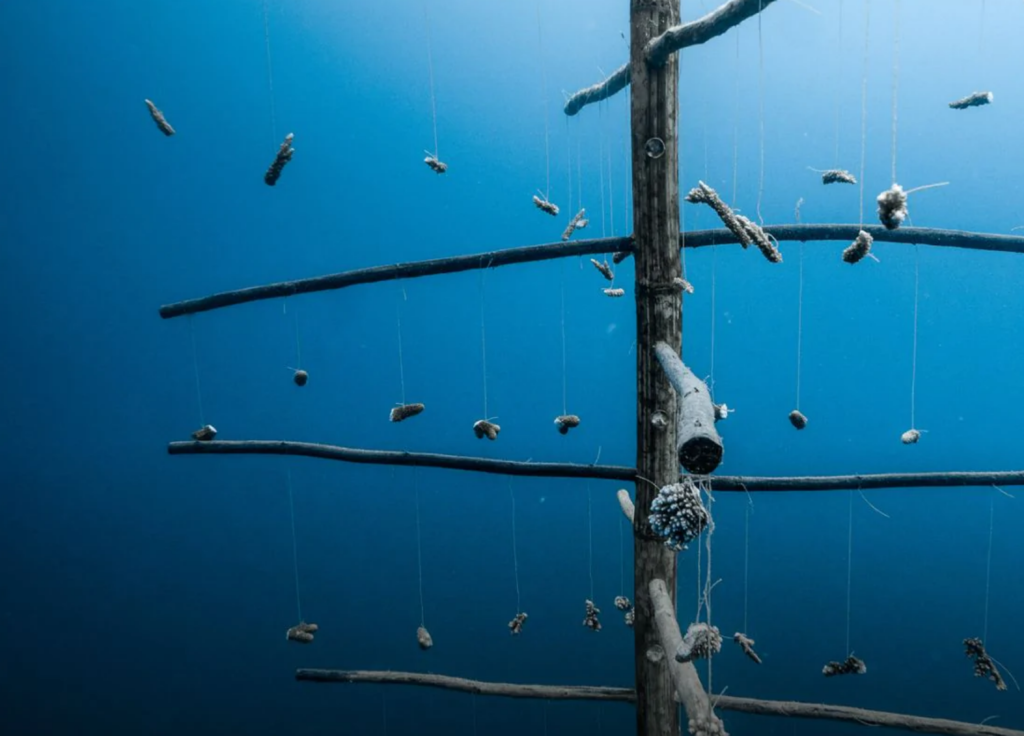Joshua Boger's Wakaya Octocorals & Giants
The gallery bellow is a collection of photographs taken off the coast of Wakaya Island in Fiji and exhibited in the lobby of the Exley Science Center. The exhibit focuses on the colors and textures of two animals: octocorals and giant clams.
Octocorallia a subclass of the class Anthozoa and are sometimes referred to as octocorals, they are soft corals with polyps growing along eight planes of symmetry. Unlike stony corals, octocorals do not form a calcium carbonate skeleton but instead have internal structures made of calcium carbonate called sclerites imbedded in its soft tissue.Members of the Tridacneae subfamily also known as giant clams are the largest living bivalve mollusks and highly endangered. Pictured here are the mantles of the species Tridacana gigas and Tridacna derasa. Tridacneae can grow up to 1 meter in length, can weigh over 200 kg, and can live up to 100 years.
These photographs were taken on a Canon 7D SLR in an Ikelite housing using a 100mm Canon EF f/2.8L IS USM Macro lens. The wide angle shots were captured using a Tokina 10-17mm fisheye lens. For lighting two Ikelite DS 161 Digital TTL strobes emitted 320 watts of light compressed into typically 1/125-1/200 of a second. “The fish never flinch, because they cannot believe they saw anything that bright for that short a time. I leave them undisturbed otherwise but believing in God.” – Joshua Boger
- All
- Coral
- Clam
To learn more about coral and the current coral collection at the Joe Webb Peoples Museum check out the story map “The Beauty of Coral Reefs”
Organizations to support
A list of organizations working to protect and repopulate coral reefs to keep an eye on, get involved with, or donate to. (To view site click on image)
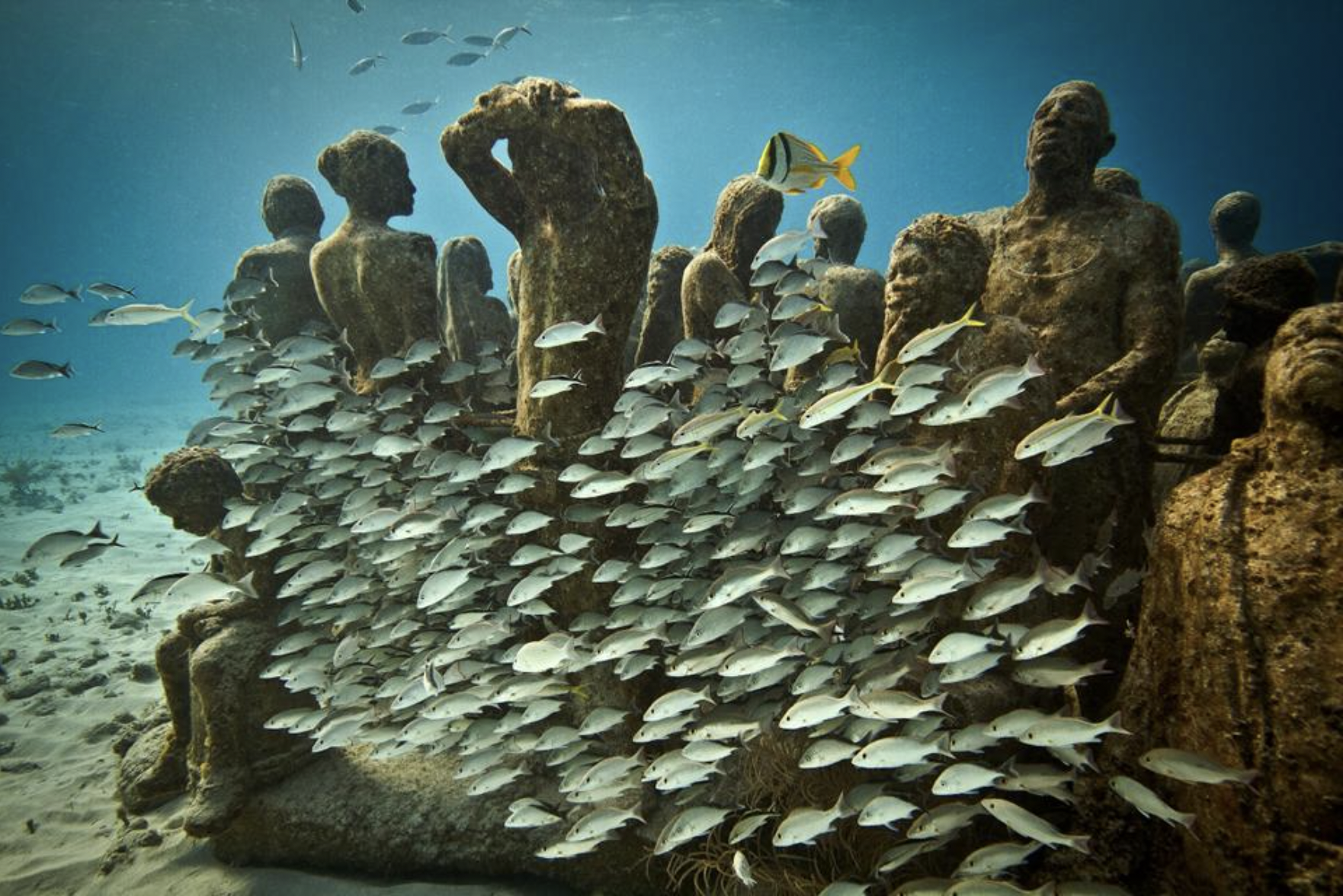
Jason deCaires Taylor Coral Reef Sculpture Garden
Artist Jason deCaires Taylor creates sculptures using pH neutral, environmentally sensitive materials to instigate the natural growth of coral.
National Oceanic and Atmospheric Administration Coral Conservation Program
The program was established in 2000 by the Coral Reef Conservation Act to protect, conserve, and restore coral reefs in the US by maintaining healthy ecosystem function. They have four main focuses:
- Increase resilience to climate change
- Reduce land-based sources of pollution
- Improve fisheries' sustainability
- Restore viable coral populations
REEFolution
Reefolutions aims to rebuild reefs by teaching members of local communities in Kenya fundamental restoration skills. Reefolutions combines scientific knowledge with local knowledge of reef environments to sustain biodiversity and contribute to the livelihoods of those that depend on the reef's resources the most.

